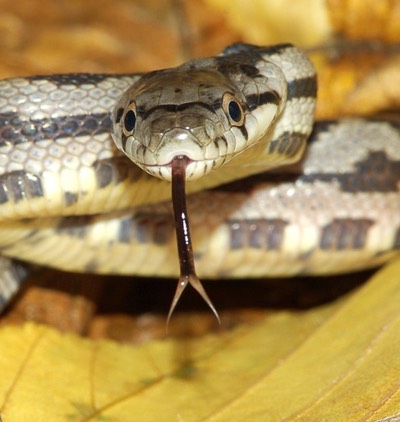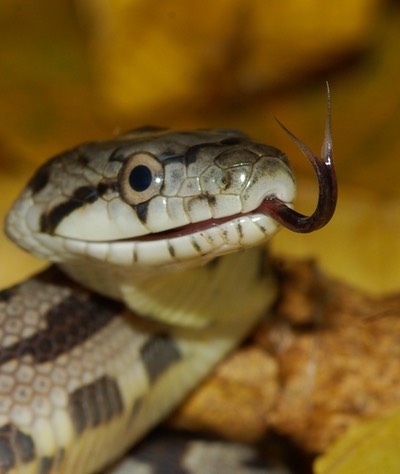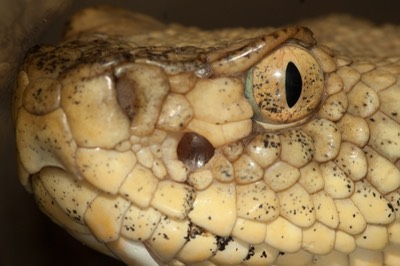
HOW A SNAKE PERCEIVE’S THE WORLD
SIGHT: Diurnal snakes clearly respond to visual cues to navigate locally, detect movements from potential prey or predators, and use sight to interact with other snakes. Nocturnal snakes may be able to see well, too. Notice how most snakes’ eyes are situated high on their head and they bulge out from the sides providing for a view ahead, above, to the side, and probably behind them as well.
TONGUE: However, virtually all snakes live in a rich, chemosensory world, that we continue to mask and ignore in ourselves. A snake’s tongue is one of the more fascinating parts of a snake that most people notice when encountering a snake. Once thought to be toxic and in some circles still used as a metaphor for speaking untruths, a snake’s tongue is an organ for gathering detailed information from the air, the ground, water (above and below), leaf litter, tree trunks, prey skin, and, of course, other snakes.
Few people have studied snakes tongue’s in recent decades more than Dr. Kurt Schwenk (at UConn). It is clear that snakes use their bifurcated tongue for many purposes including prey detection, species recognition, scent trail sign and quality, and interactions. Most fascinating is the variation in tongue morphology and the ability of snakes to spread the two tongue tips (the tines) and detect differences in chemical cue intensity from the right and left side. Watch a springtime male gartersnake and notice the active tongue-flicking (with widely spaced tips) and head movement to keep on a scent trail of a female, a trail to which we are totally oblivious. Take a look at one of Dr. Schwenk’s many papers to get much more insight.
CHEMORECEPTION: Several studies (see here and here for abstracts) show that neonate Timber Rattlesnakes are able to follow, over many days, their mothers who leave a scent trail from their birthing site to the winter den. Presumably, without this communication, survivorship in the young would be reduced. Do these little snakes learn to recognize their immediate landscape along the way when they are on their own next spring? How does a five-inch Ribbonsnake find its way around?
PHEROMONES: Of course, with the complexity of tongue morphology and the ability to sample chemical cues, the use of pheromones is rampant in the snake world, as it is in most mammals, many insects, and probably other animals. These chemicals provide a rich language conveying many bits of information, much like a lingering glance or a tone inflection during a casual conversation with us. And, in snakes, it provides the same function—identifying potential mates—and estimating their willingness, readiness, and possibly fitness. For a fascinating story about Gartersnake pheromones, take a look at this article.
NAVIGATION. Even before modern technology allowing herpetologists to find, follow, and collect data remotely, it was clear that snakes generally know where they are going. The annual treks by both snakes and researchers to winter dens gave the first clues. However, the fact that snakes travel from one area to another and back again during the year doesn’t answer the vexing question of how do they actually navigate. Do they have a sun compass, use star patterns, detect geomagnetism, sense polarized light, follow scent trails, recognize landmarks, or what?

HEARING: While not completely deaf, snakes do not rely on airborne sounds to sense the world. Thanks to their low-lying body form, they are able to pick up vibrations from the ground that transmit directly to their lower jaw bones and into their middle and inner ears. It’s difficult to sneak up on a snake, though they may habituate to your presence after some time and not evaporate at the first thunder of your presence.
Above: Milksnake with red tongue

Left: Neonate Milksnake showing eye placement. It can see you in all directions, except below it's chin.



